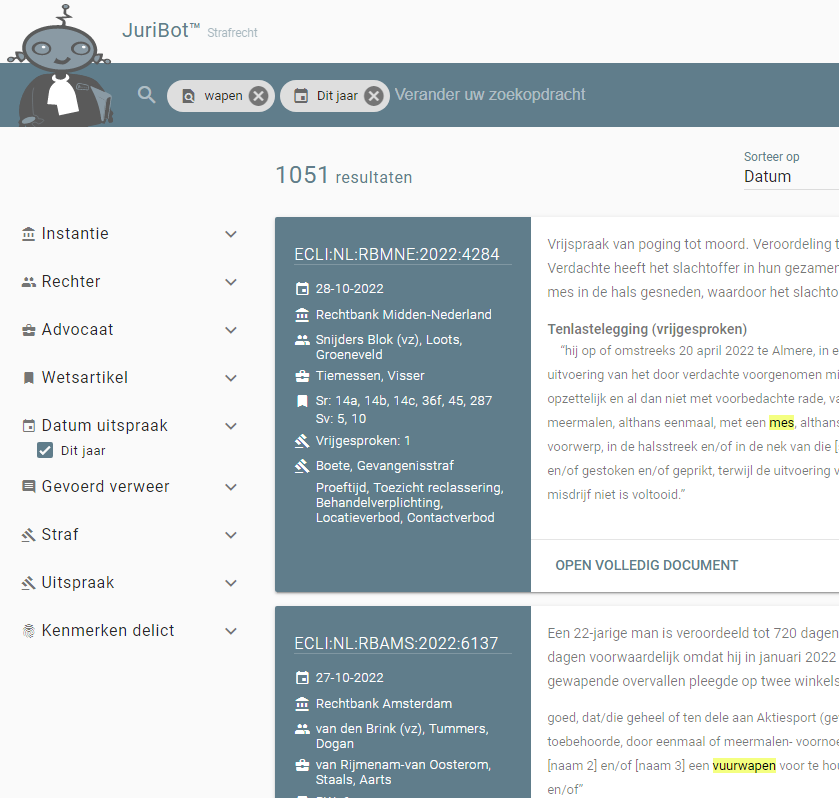This demo will allow you to search semantically in all published jurisprudence of Dutch criminal law.
The main benefit of semantic search is that synonyms and holonyms are automatically included in the search. For example, a search for “weapon” will also return results that only refer to a knife or pistol.
Start the demo, and type your search query for the entire document or just the indictment and use the various filtering options to find the results you want.
Good luck!
Background
To enable semantic search and filtering of case law, the documents are indexed on the basis of our Jurisprudence ontology. This annotates all relevant passages with metadata so that they can be retrieved quickly. In addition, the various sections that make up a case law document are also automatically identified. As a result, the context of a sentence canbe used to differentiate its meaning. For example, the term “not guilty” in the judge’s ruling means something completely different than when it is found in the defendant’s defense. This technology makes it easy to perform searches that are virtually impossible to implement with, for example, Google search. Such as, for example:
Show case law about suspects who have been convicted of attempted aggravated assault, but have not been punished due to a successful defense based on an insanity plea but where a fine has been imposed.
Please refer to the manual for a further explanation of how this search is processed by the application.
Practical applications
Semantic search and filtering is useful in any situation where relevant documents need to be found quickly. The ontology-based approach used in this demo is particularly powerful in situations where only a full match is relevant. Standard search engines work with a “best match” metric that results in a ranked list of documents. This means that the results may also contain less relevant documents.
With our approach, all documents found are relevant. This saves a lot of time and our search results can also be used directly for statistical studies on the occurrence or distribution of certain characteristics in the dataset.
Please refer to our product page with more examples of language technology applied to the legal domain.

